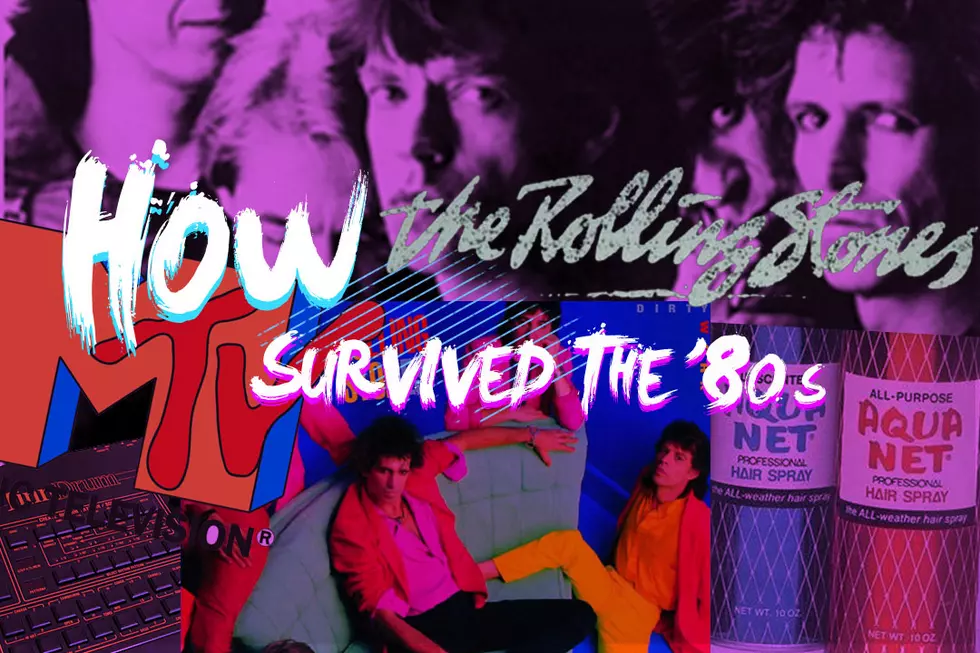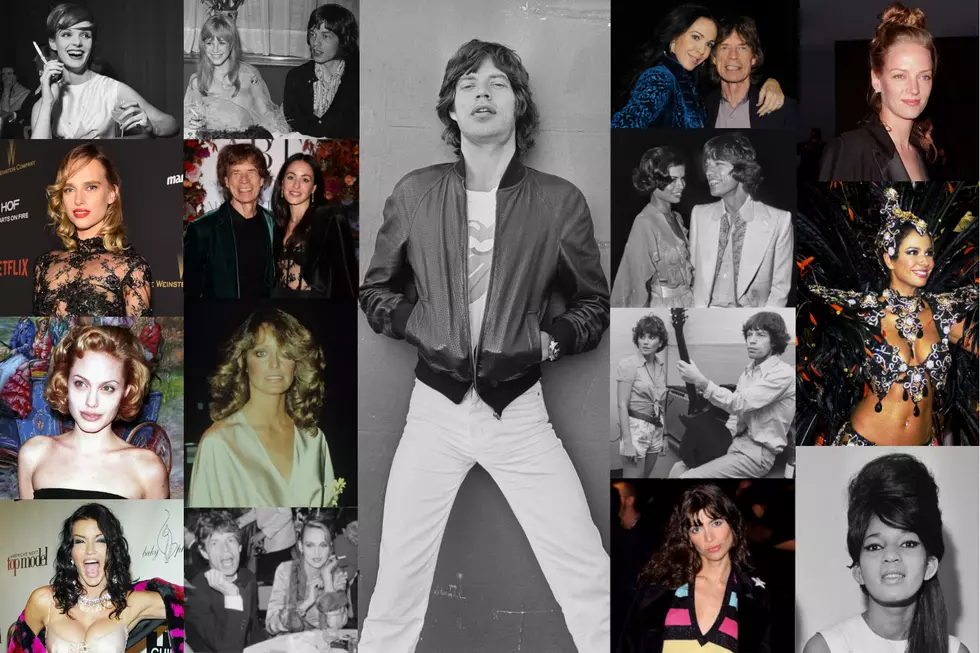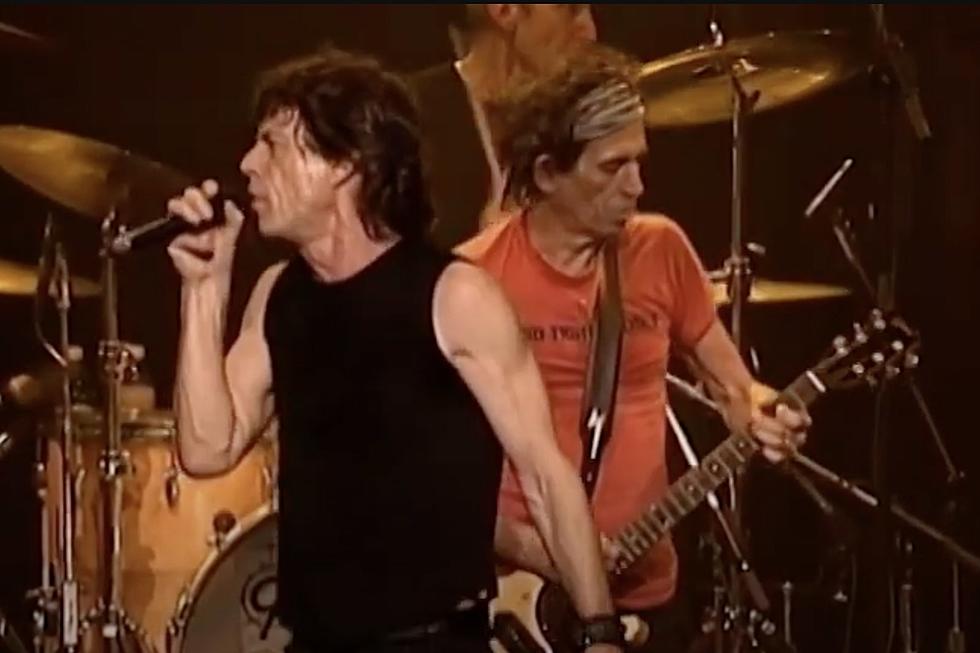
How the Rolling Stones Survived the ’80s
Like many classic rockers, the Rolling Stones started the '80s in pretty good shape. By the time the decade was drawing to a close, like many of the veterans who held on long enough to make it to the MTV era, they were barely left standing. It was a rough period for a rock 'n' roll band like the Stones, and it was only going to get rougher.
But it didn't look that way at the dawn of the decade. Following the release of seven straight No. 1 albums (starting with 1971's Sticky Fingers and ending with 1980's Emotional Rescue), they put out their eighth, Tattoo You, which stayed at the top of the chart longer than any of those other LPs – for nine weeks.
So, yeah, the previous 10 years had been pretty great for the Rolling Stones. But that would be the band's last No. 1 album to date.
Still, all looked good in 1980 with Emotional Rescue and then in 1981, when Tattoo You debuted. In addition to that hit album (which, in reality, was made up of leftover tracks from various '70s sessions), the Stones also had a huge hit all over the radio and MTV, which aired its first video right around the same time "Start Me Up" was issued as the LP's first single in August 1981.
Watch the Rolling Stones' Video for 'Start Me Up'
And then there was the tour in support of the album, the group's biggest at the time, and the run that pretty much started the big-ticket and big-event behemoth that big-name concerts grew into over the years. You have the Stones to thank for that.
Yeah, the Stones looked good to go in the '80s.
So, what happened? The '80s happened, that's what happened. Few artists that got their start in the '70s (let alone the '60s) were immune to the decade. Even the best of them – those who were even still around; many of the greats, including Led Zeppelin, Pink Floyd and the Who were either broken up or on their way out – faced new challenges in the new decade.
First, the Stones tried to capitalize on the massive tour in support of Tattoo You with both a live album (Still Life [American Concert 1981]) and a concert movie (Let's Spend the Night Together). Neither was a hit, but no matter: These show souvenirs were designed to be nothing more than stopgaps between records.
Watch the Rolling Stones' Video for the Live 'Going to a Go-Go'
Then, in 1982, they went to Europe for their first tour there in six years, with hopes of replicating the success of the U.S. tour. And like the Stateside road trip, it was huge. They capped the year by signing a new record deal with CBS for $50 million, the biggest contract ever up to that point. But they owed their old company, Atlantic, one more album.
That's when they delivered Undercover, the 1983 album that broke the band's streak of No. 1 records and the one that signaled what most of the remaining '80s would be like for the Stones.
It's not a bad album, and considering what was up next, it's a pretty good one. But Undercover didn't sound like a typical Stones record, and it struggled to crack the Top 5. Even a grimy video for the lead single, "Undercover of the Night," and early support from MTV couldn't push the album any higher than No. 4. It didn't help matters that the band didn't tour and an increasingly nasty rift between Mick Jagger and Keith Richards had reached its boiling point.
Watch the Rolling Stones' Video for 'Undercover of the Night'
By 1984, Jagger had a solo record deal and spent most of his time working on that without help from his longtime group. Richards wasn't happy. He also wasn't happy with being a Rolling Stone at this point, feeling somewhat shackled by fans' and the record label's expectations. But mostly he wasn't happy that when it came time to assemble the next band album, Jagger was off doing his solo thing.
She's the Boss was released in early 1985, and Jagger spent most of the year making videos (for himself, with David Bowie and with the Jacksons), showing up at Live Aid with Tina Turner and pretty much avoiding the rest of the Rolling Stones. With most of Jagger's best songs going toward his solo LP, Richards was tasked with putting together the band's next album mostly by himself with some help from Ronnie Wood, whose role in the group had expanded in the '80s.
When Dirty Work arrived in 1986, it was roundly dismissed as one of the Stones' worst albums – though "One Hit [To the Body]" managed to spark some of the old fire. Like Undercover, it stalled at No. 4. And, like with Undercover, there was no tour to support it. Jagger instead was working on his second solo record – 1987's Primitive Cool – and his first solo tour, which included several Rolling Stones songs. Richards was not pleased, and the band, for the first time in its quarter-century history, was on the verge of breaking up.
Watch the Rolling Stones' Video for 'One Hit (To the Body)'
Richards used the downtime as an opportunity to record his first solo album, 1988's Talk Is Cheap, a ramshackle, garage-sounding rock 'n' roll record that was the closest anybody in the Rolling Stones got to their classic years since Tattoo You. Not to be outdone by Jagger's solo tour, Richards hit the road with the X-Pensive Winos, downplaying the glitz and glam Jagger emphasized in his shows.
The time away from each other must have done everybody some good. By 1989, when the Stones were inducted into the Rock & Roll Hall of Fame, Jagger and Richards were speaking again and got together to work on their best album since 1981. Steel Wheels isn't an essential Stones album, but it's as close as the band got to one, for the most part, during one of its most grueling decades.
For the first time in years, save for some songs here and there, they sounded like they cared again. The last time they sounded this committed to the material was way back in 1980 on Emotional Rescue. (Remember, Tattoo You was made up of a bunch of outtakes, though you could say Undercover was committed, just misguided in its thinking and execution at times.)
Listen to the Rolling Stones' 'Mixed Emotions'
The band hit the road for the first time in seven years, taking its massive Steel Wheels and Urban Jungle tours to North America, Europe and Japan. By the time it was all over, it was the Stones' biggest tour ever as they ushered in a new era: the era of the mega concert experience.
From here on out, the band's albums – there have been only a few since the release of Steel Wheels in 1989 – took a backseat to the nostalgia-filled shows that got bigger and bigger over the years, as horn sections, backing singers and guests joined them onstage to replicate their hits for the millionth time.
It all took a toll on bassist Bill Wyman, an original member since the group's formation in 1962. He officially quit the band in 1992, but the seeds for his departure were planted in the late '80s, arguably the Stones' last significant years. They barely made it through the decade, and by the time they finally worked out their problems at the start of the new one, they seemed bruised, beaten and scarred.
Of course, the Stones are still around. And, depending on how you look at things, they're bigger, or at least richer, than they've ever been – thanks to a string of tours that's kept them on the road periodically since the '90s. They're moneymakers, no doubt, and the band knows what its audience wants. That means "(I Can't Get No) Satisfaction." And "Brown Sugar." And "Miss You." And even some from the '80s, like "Start Me Up."
But you won't hear too much new or unfamiliar material, mostly because the Stones haven't released an album of original material since 2005. No matter. These days, it's all about holding on to the past rather than defending their title of the World's Greatest Rock 'n' Roll Band. They gave that up long ago, even before the '80s rolled around, whether they knew it or not.
The '80s Most Outrageous Rock Fashions
You Think You Know the Rolling Stones?
More From Ultimate Classic Rock









